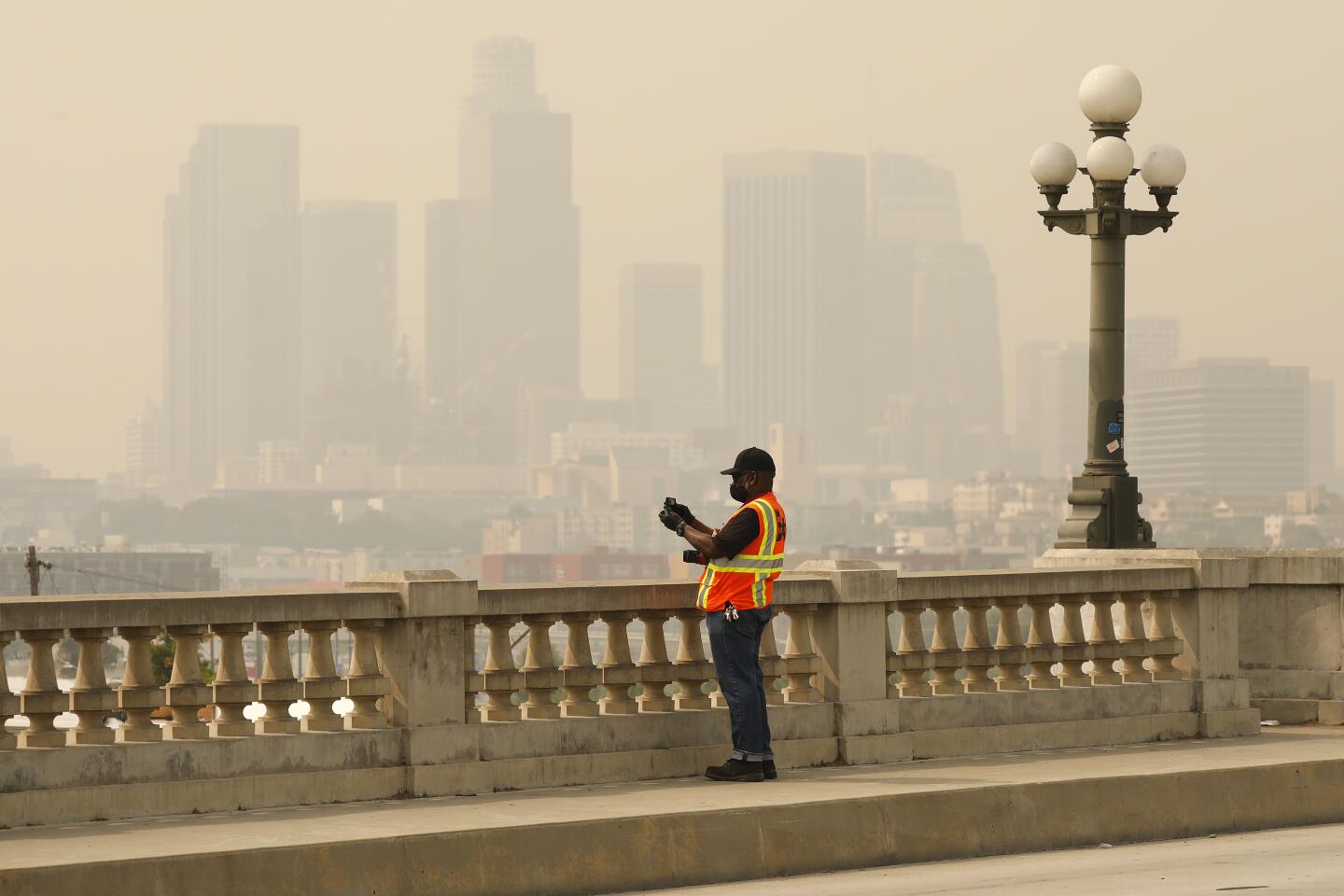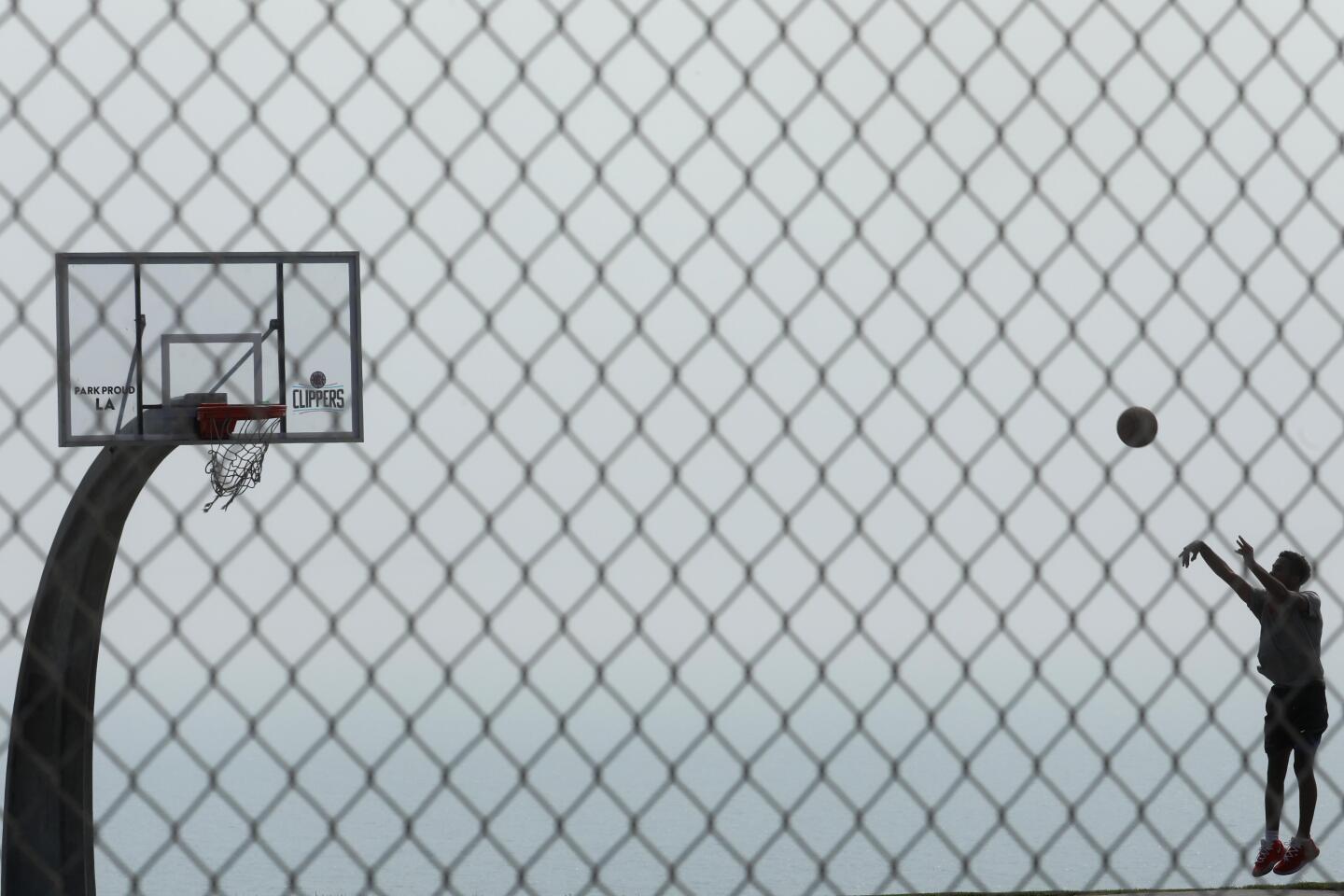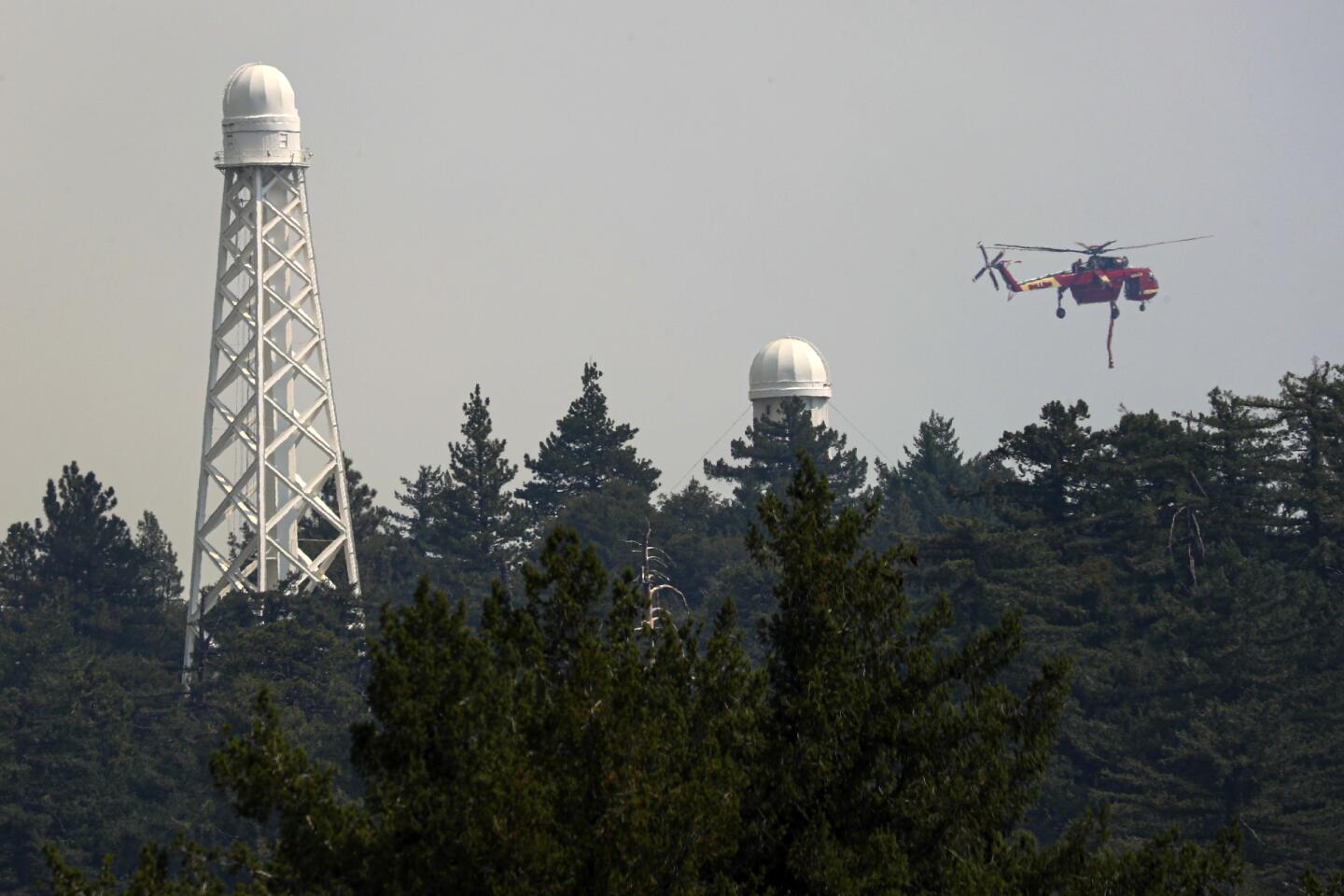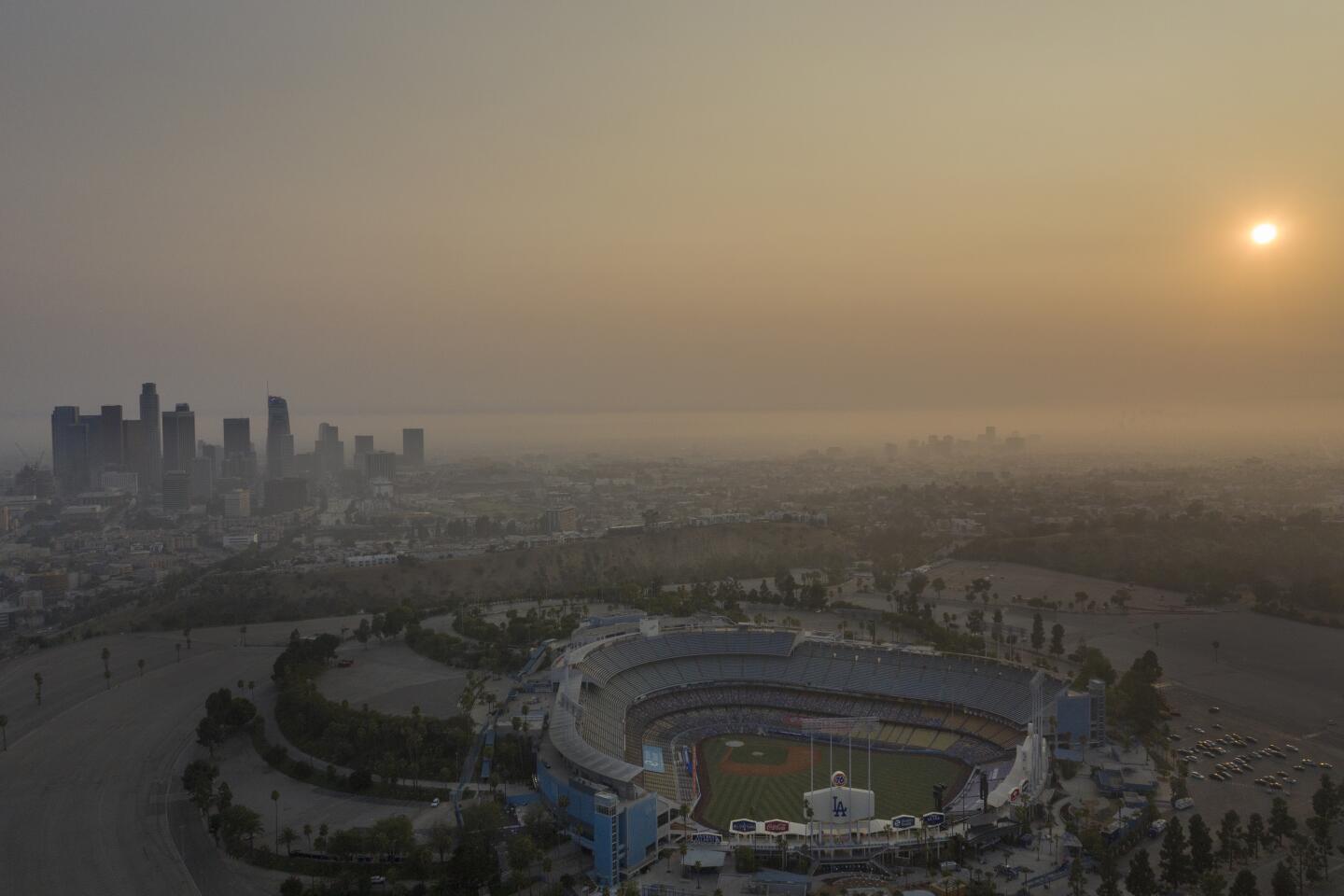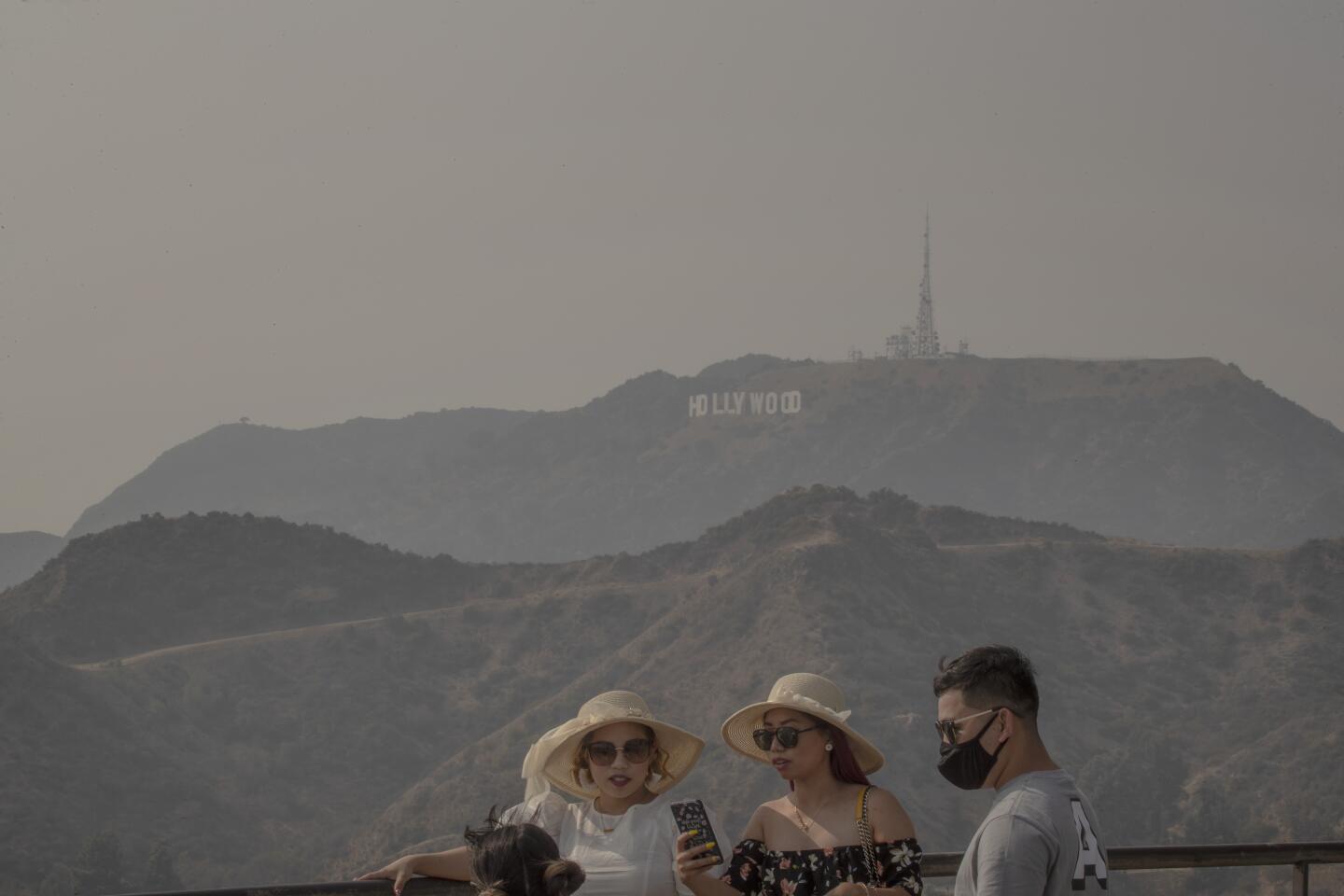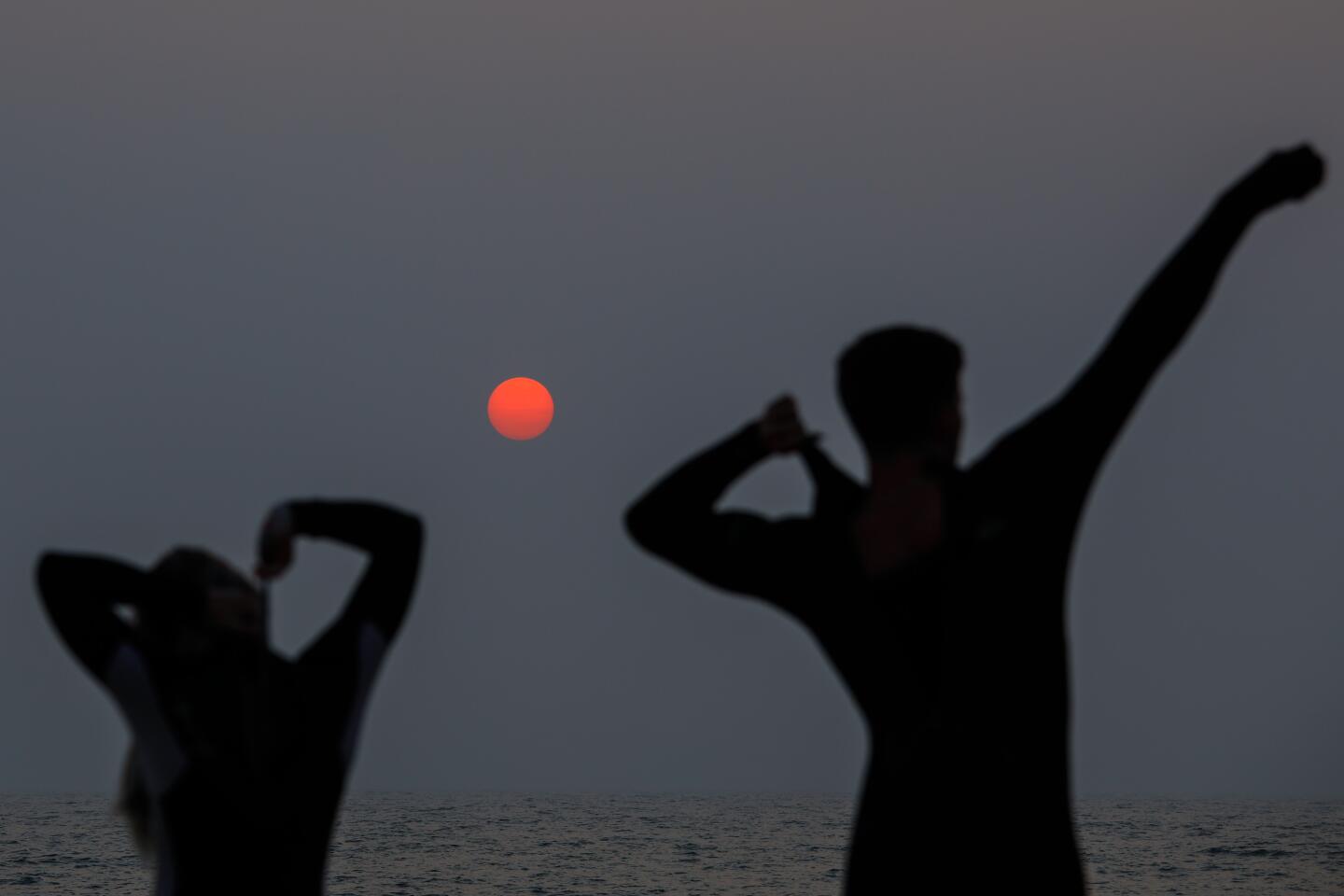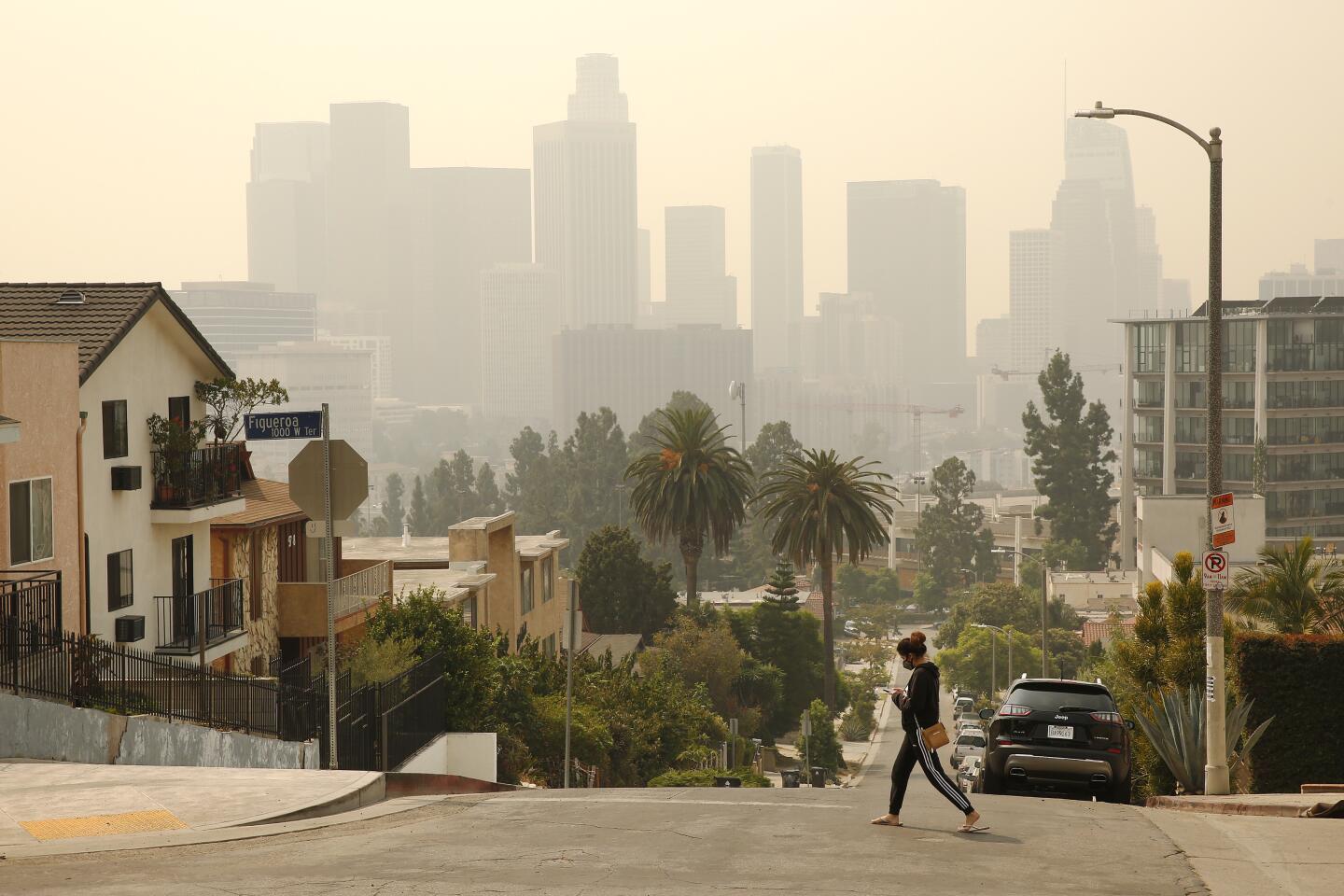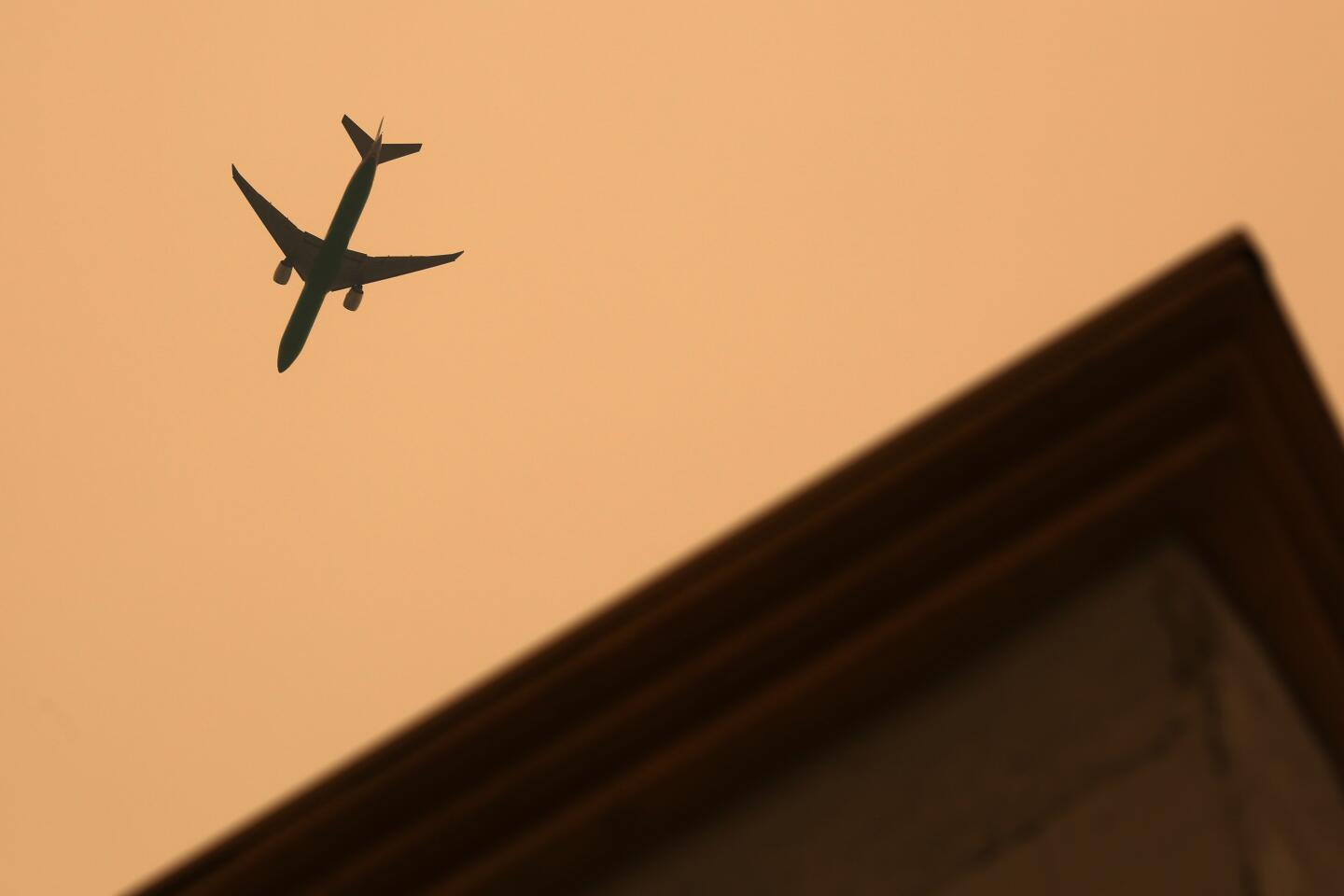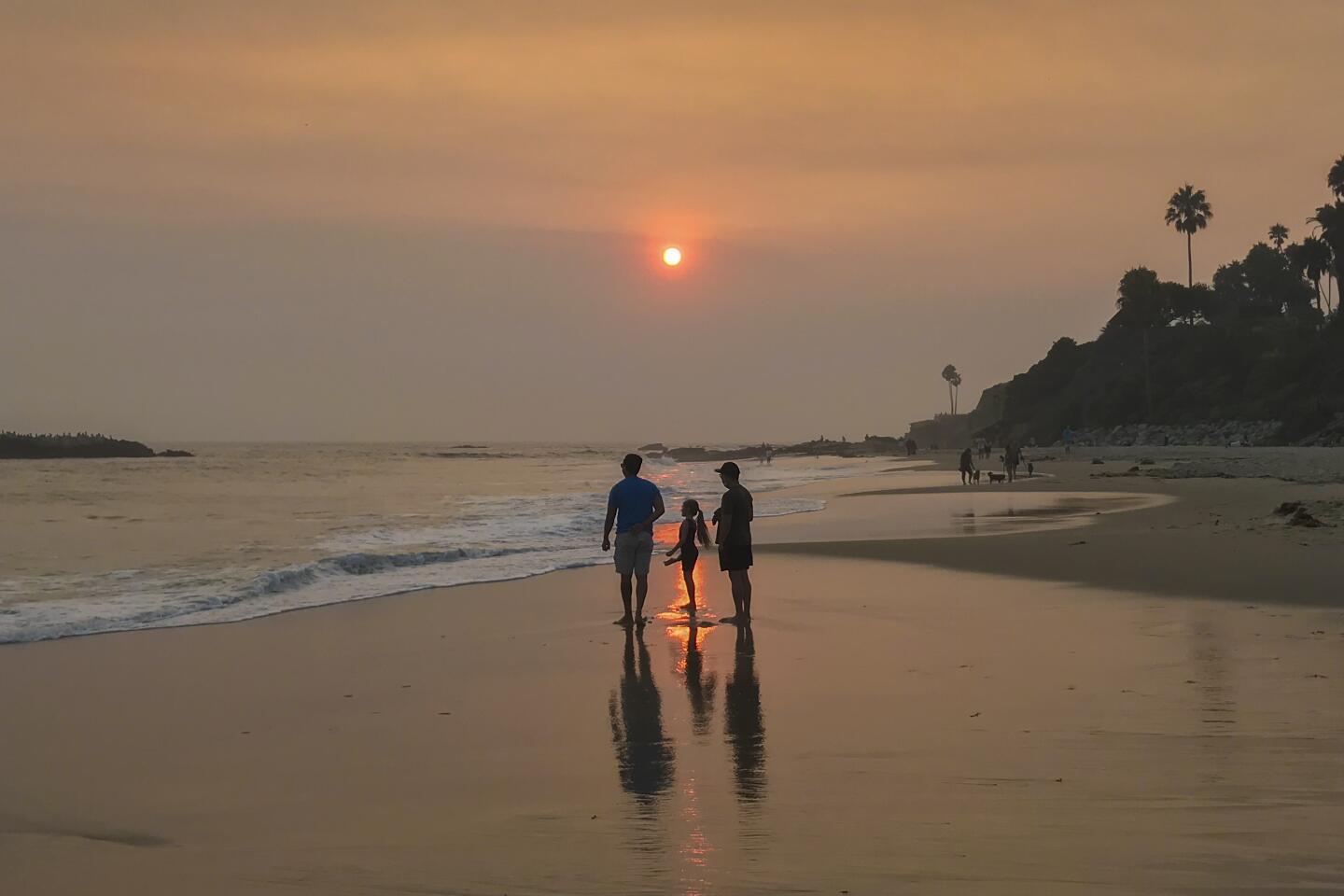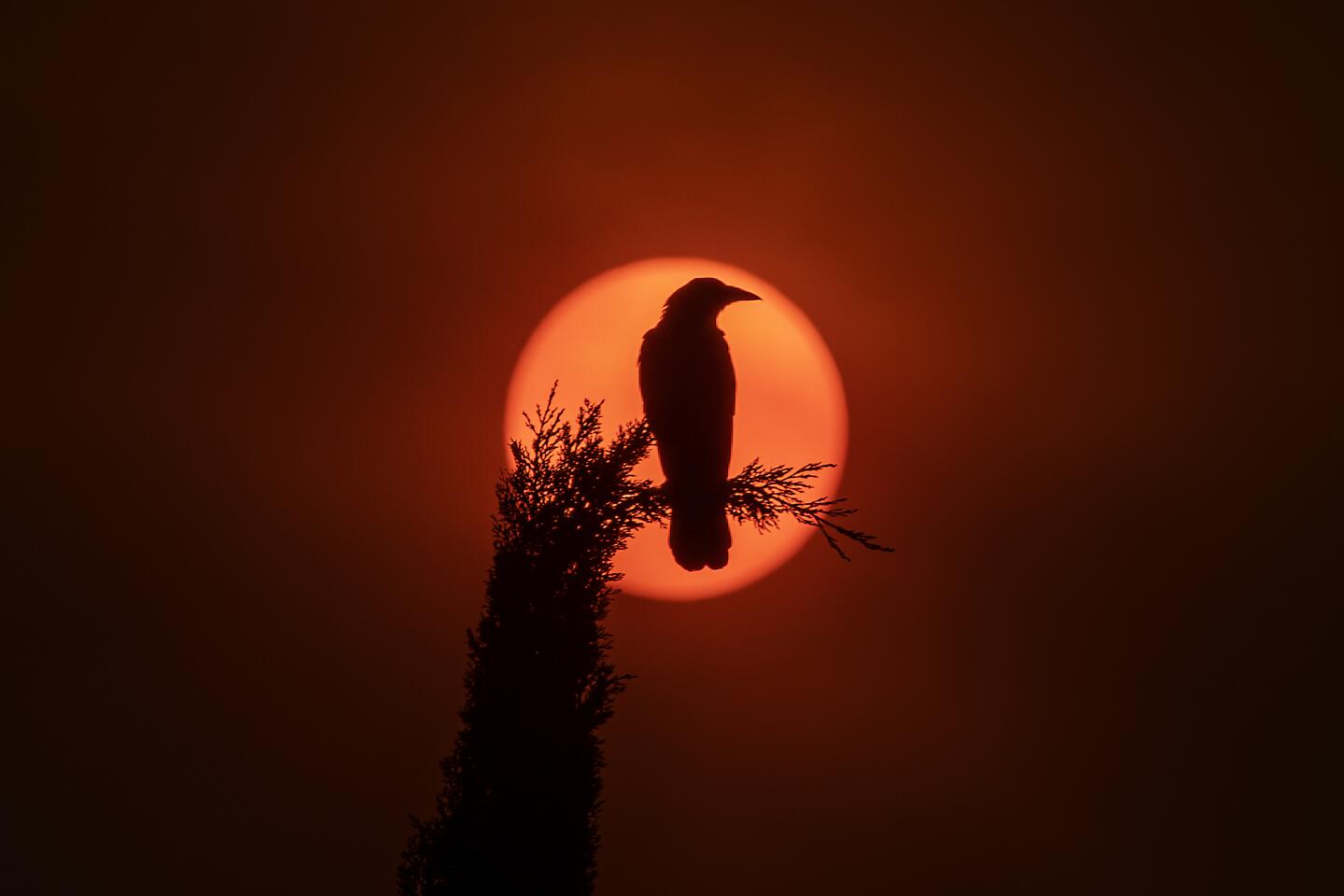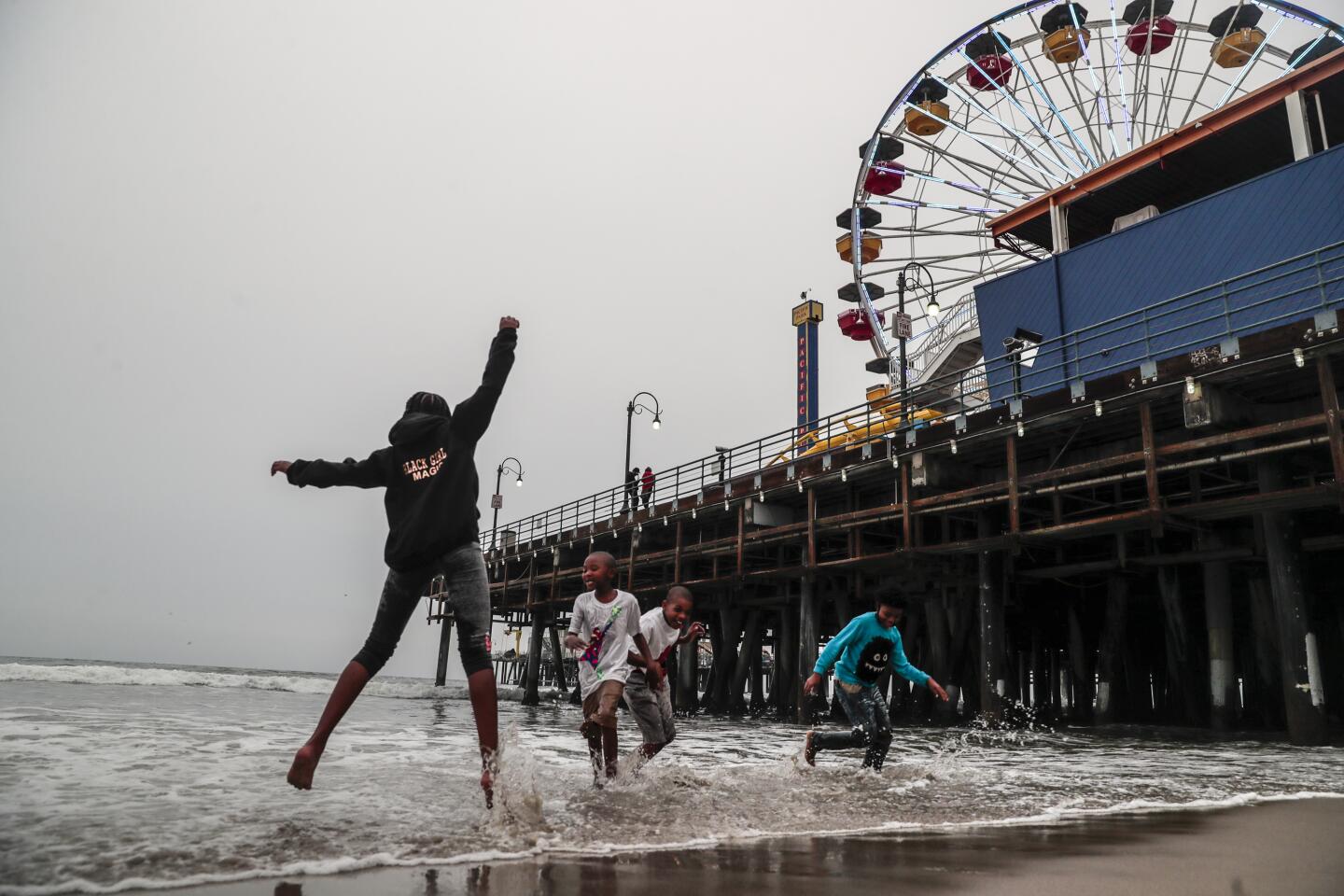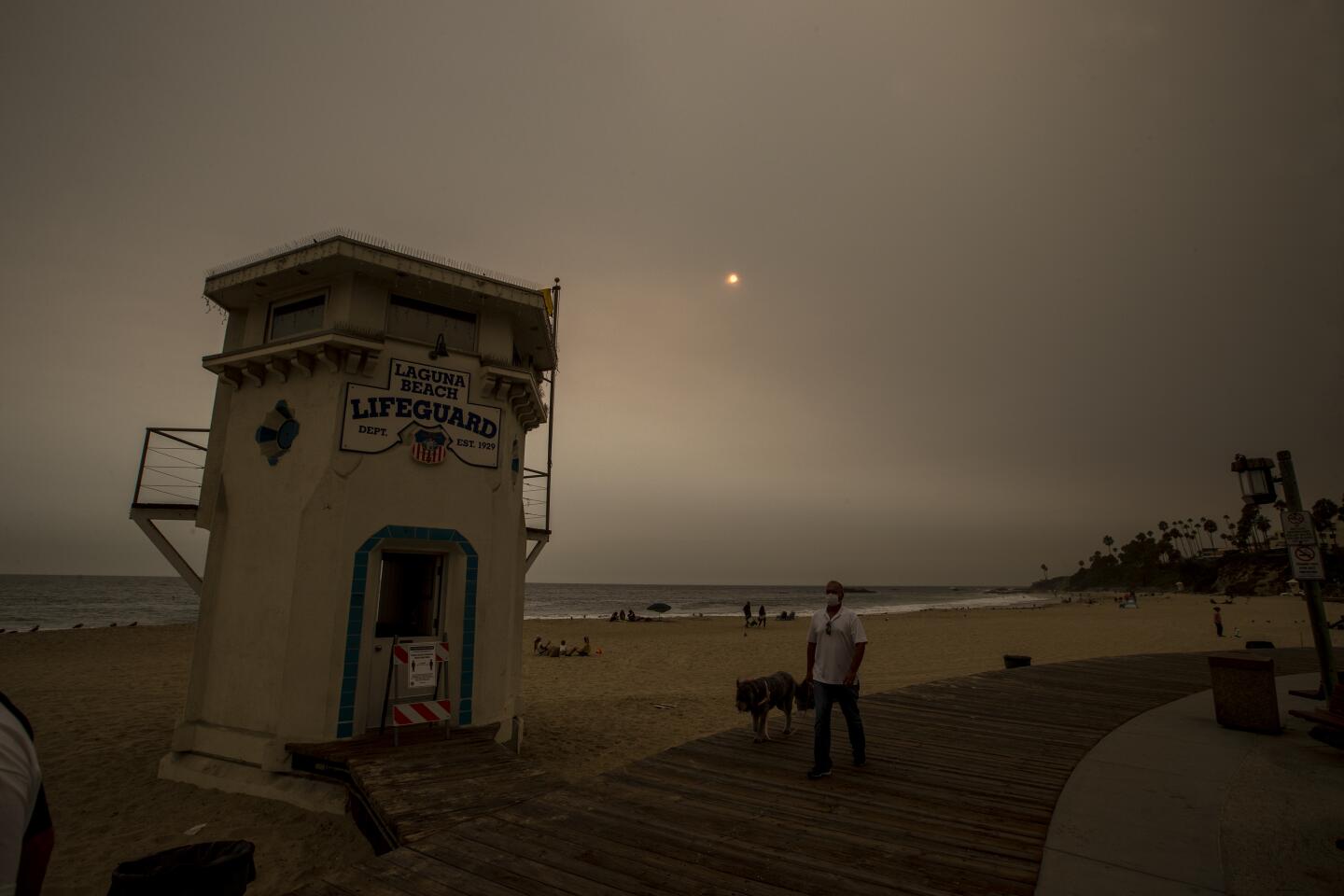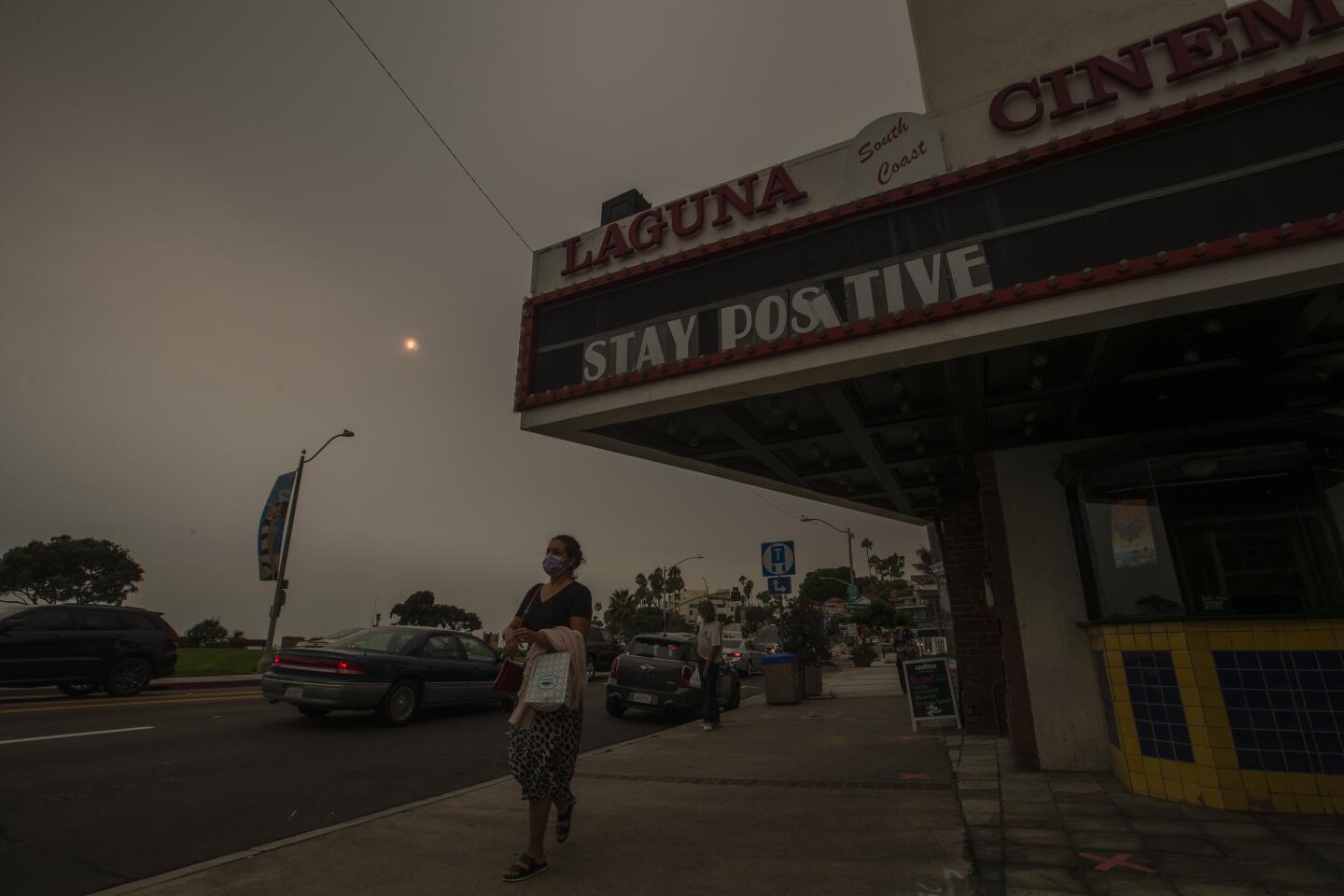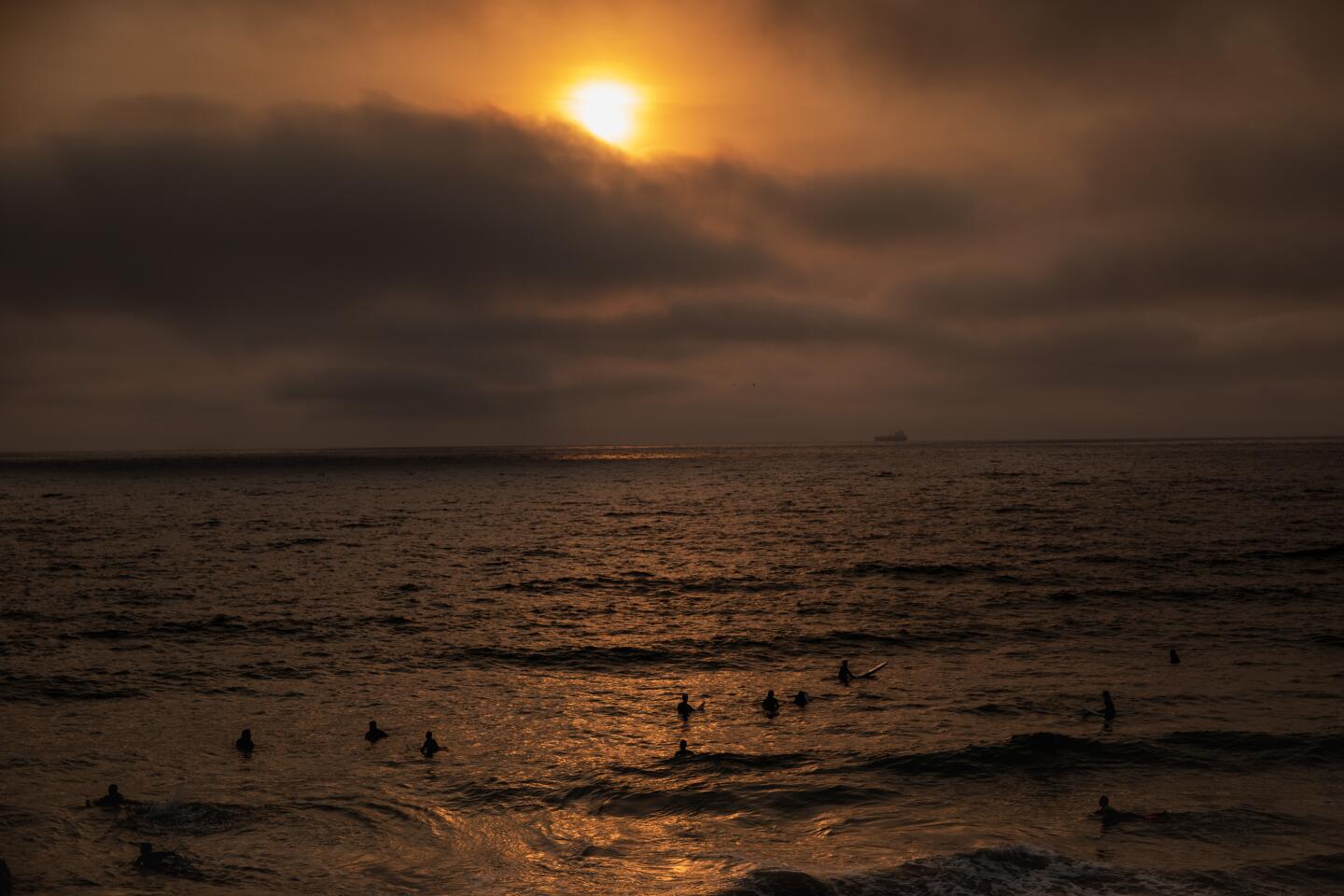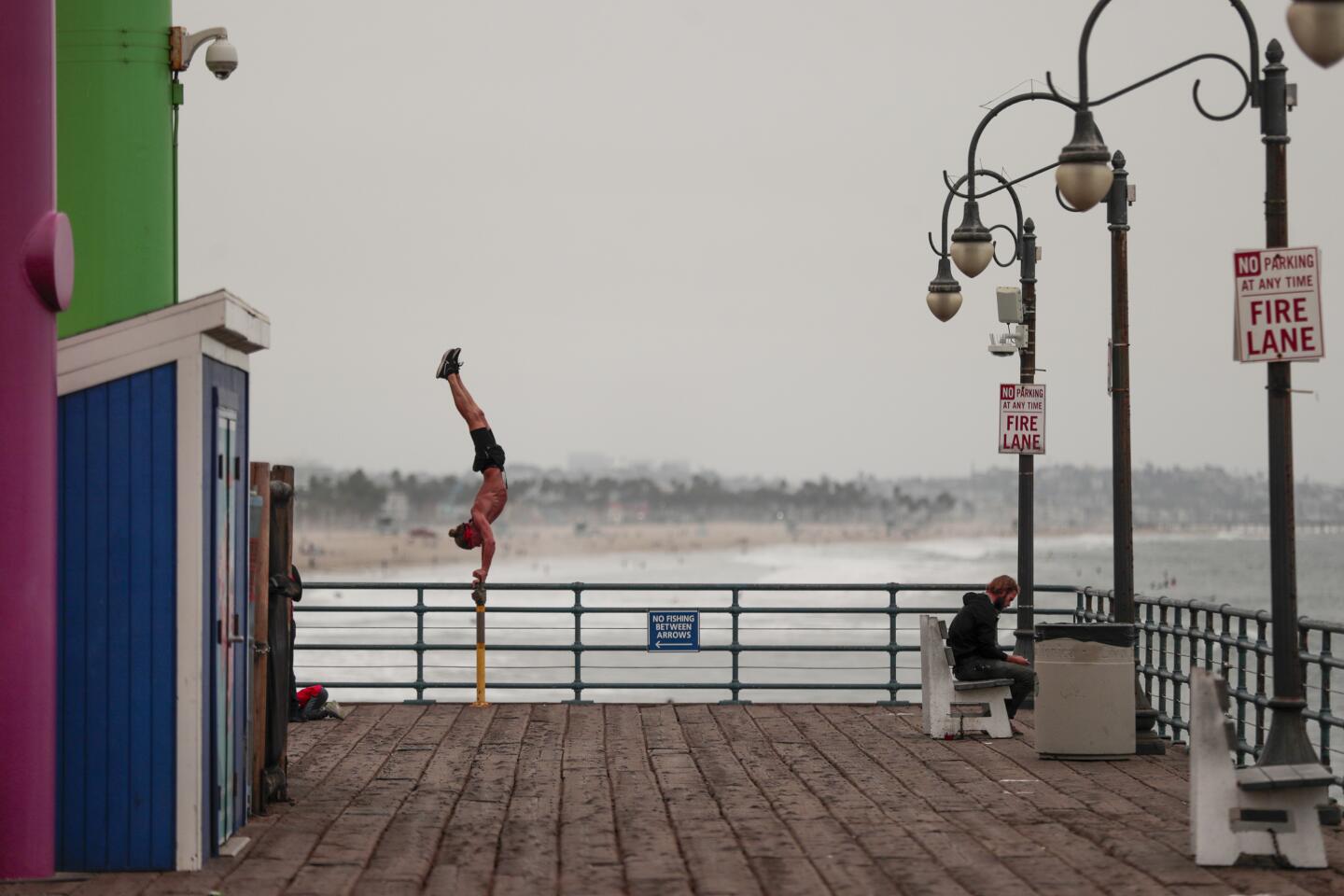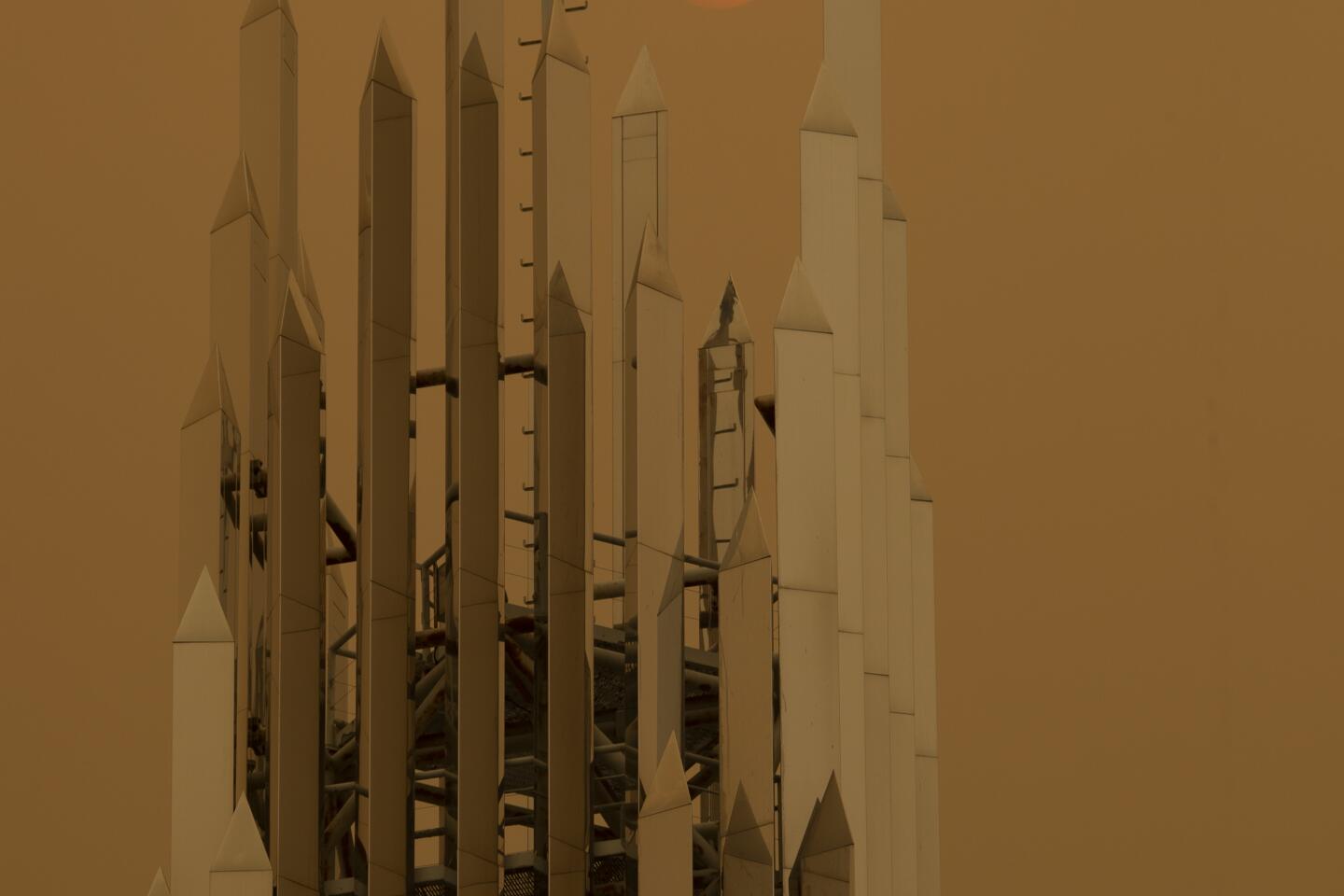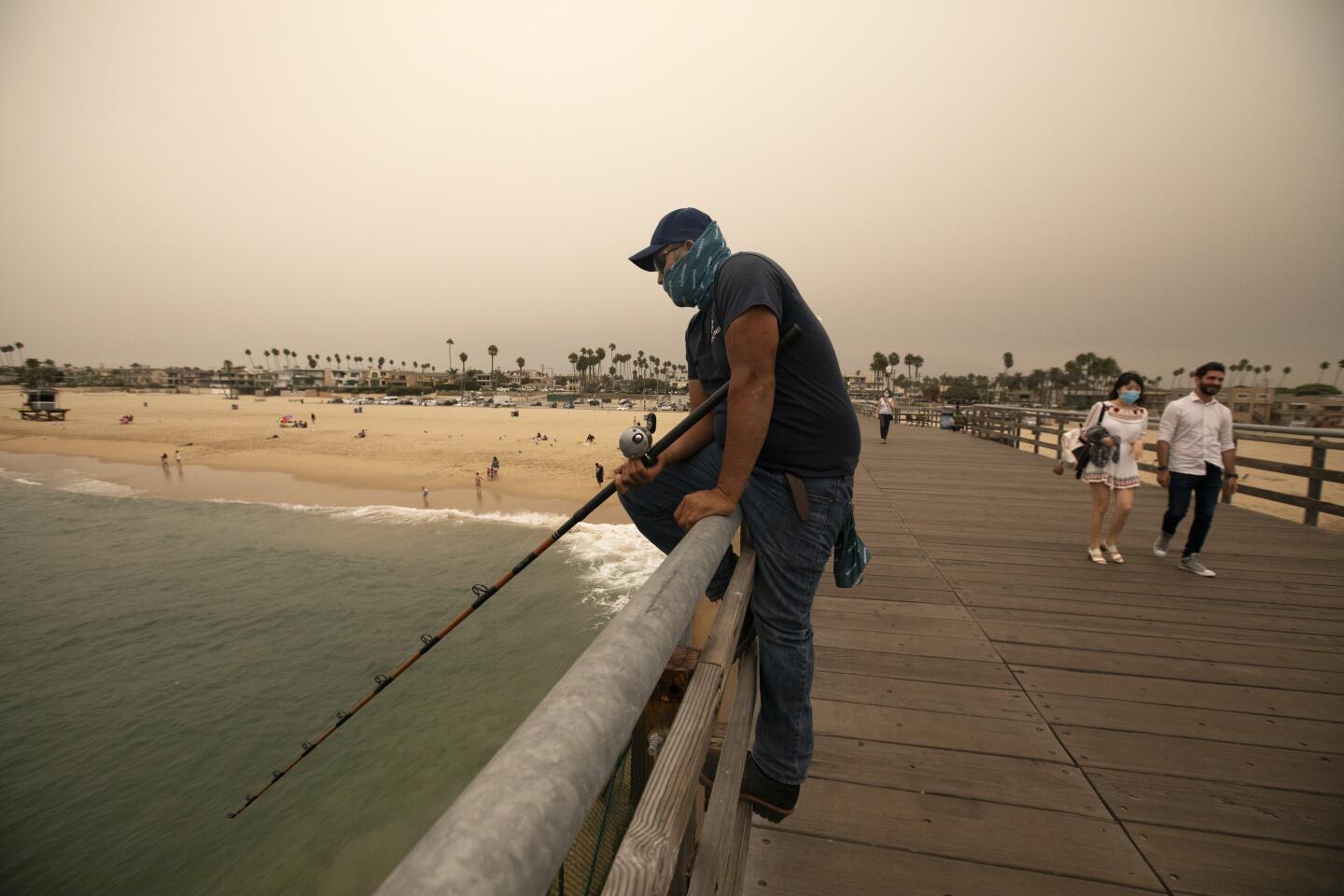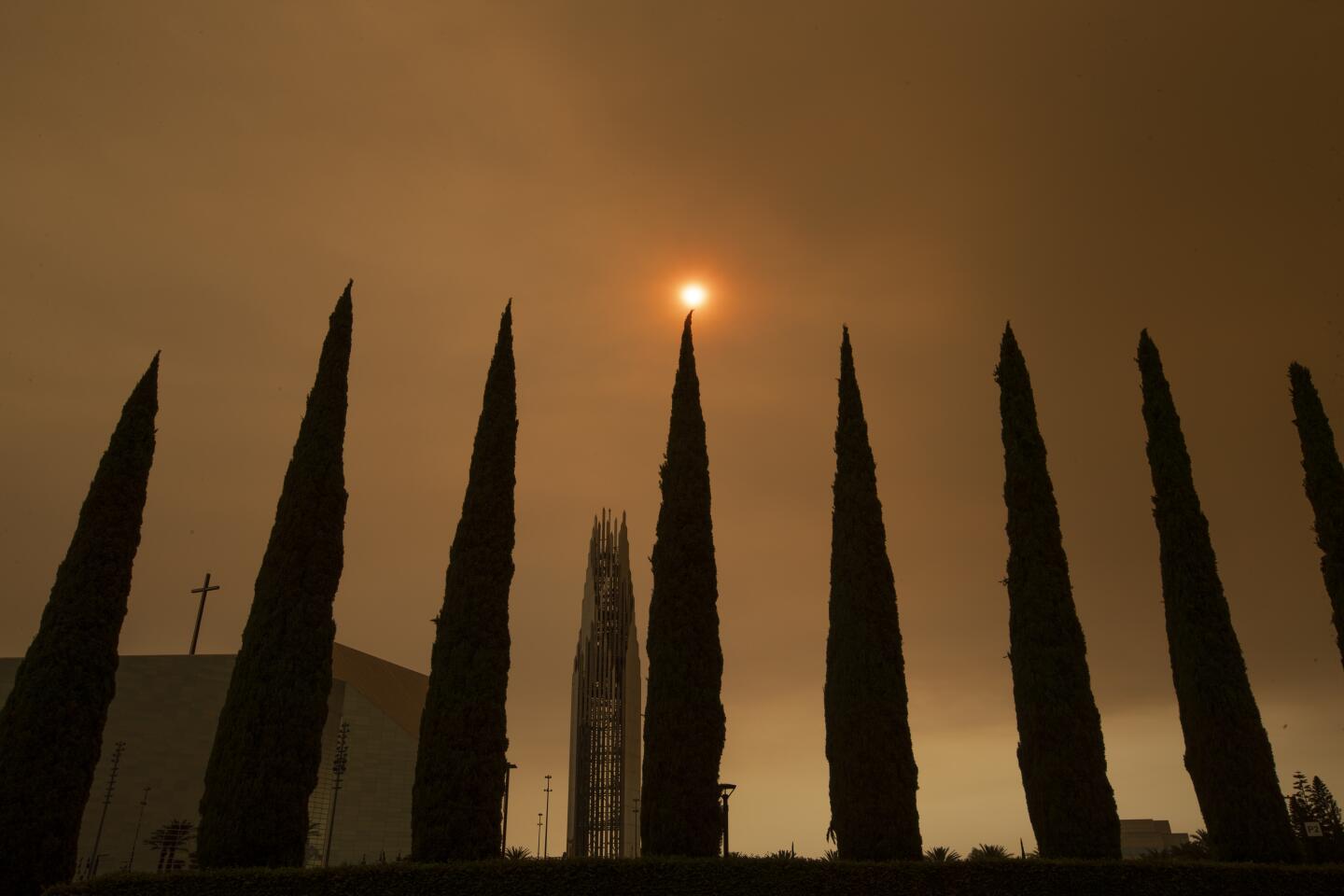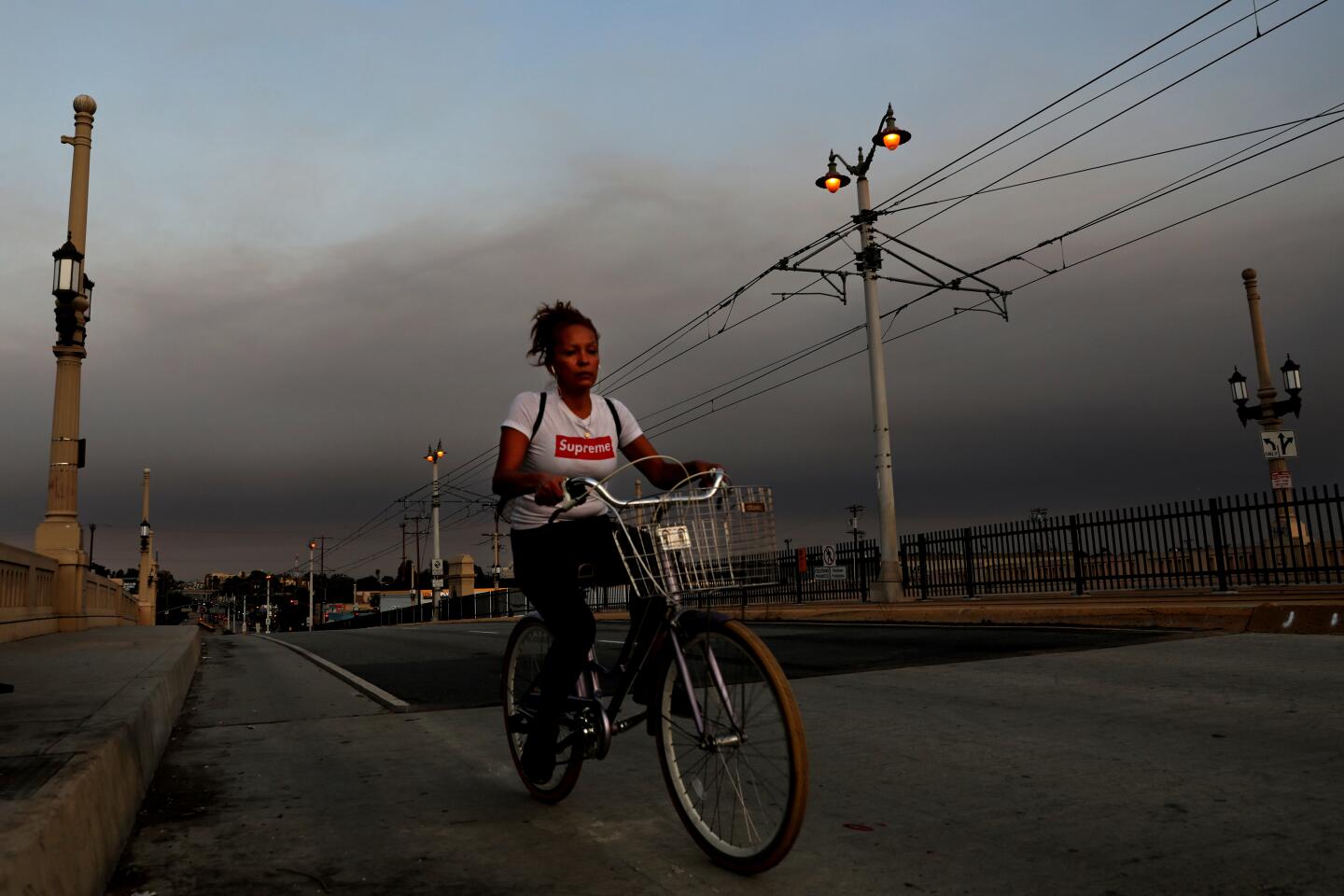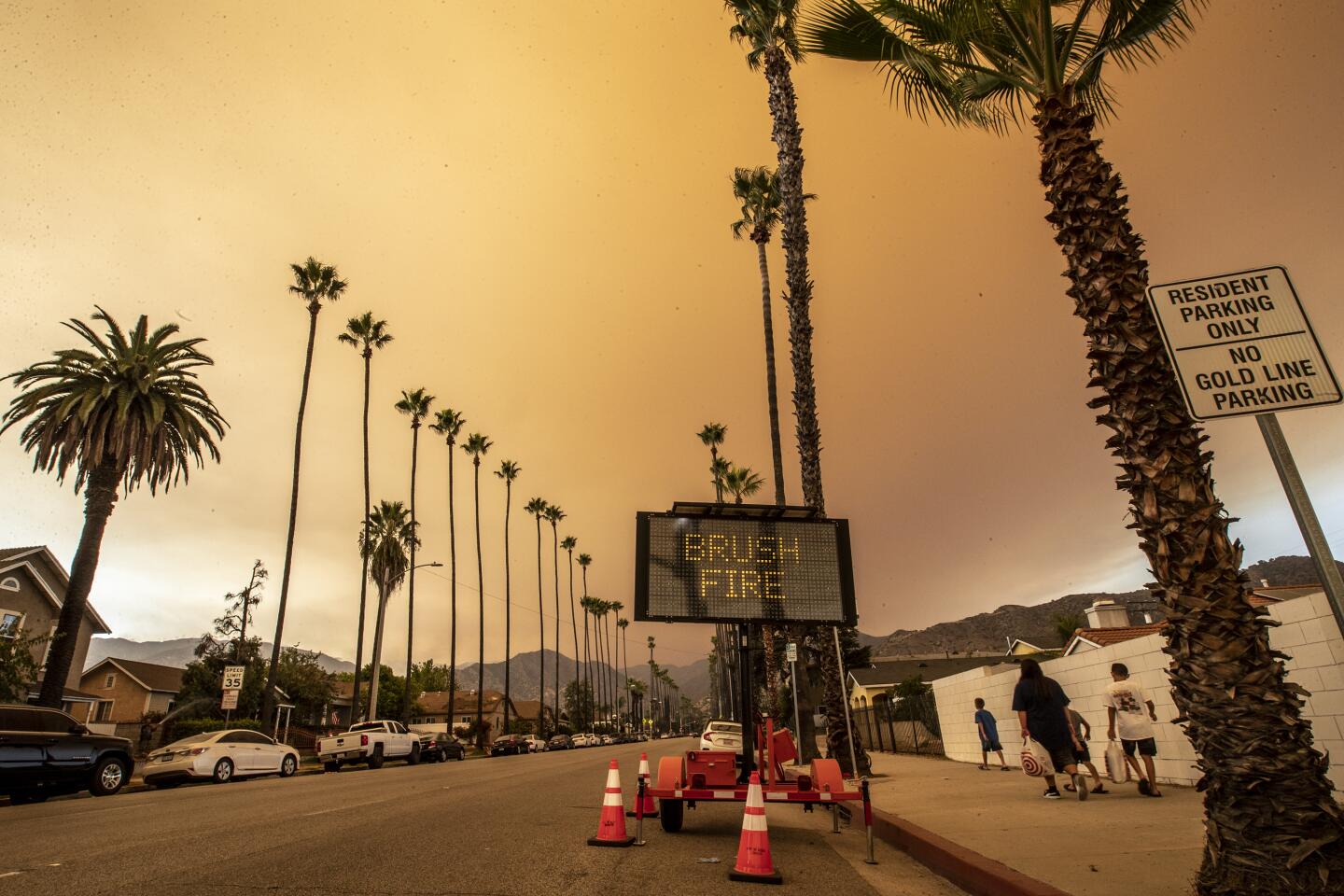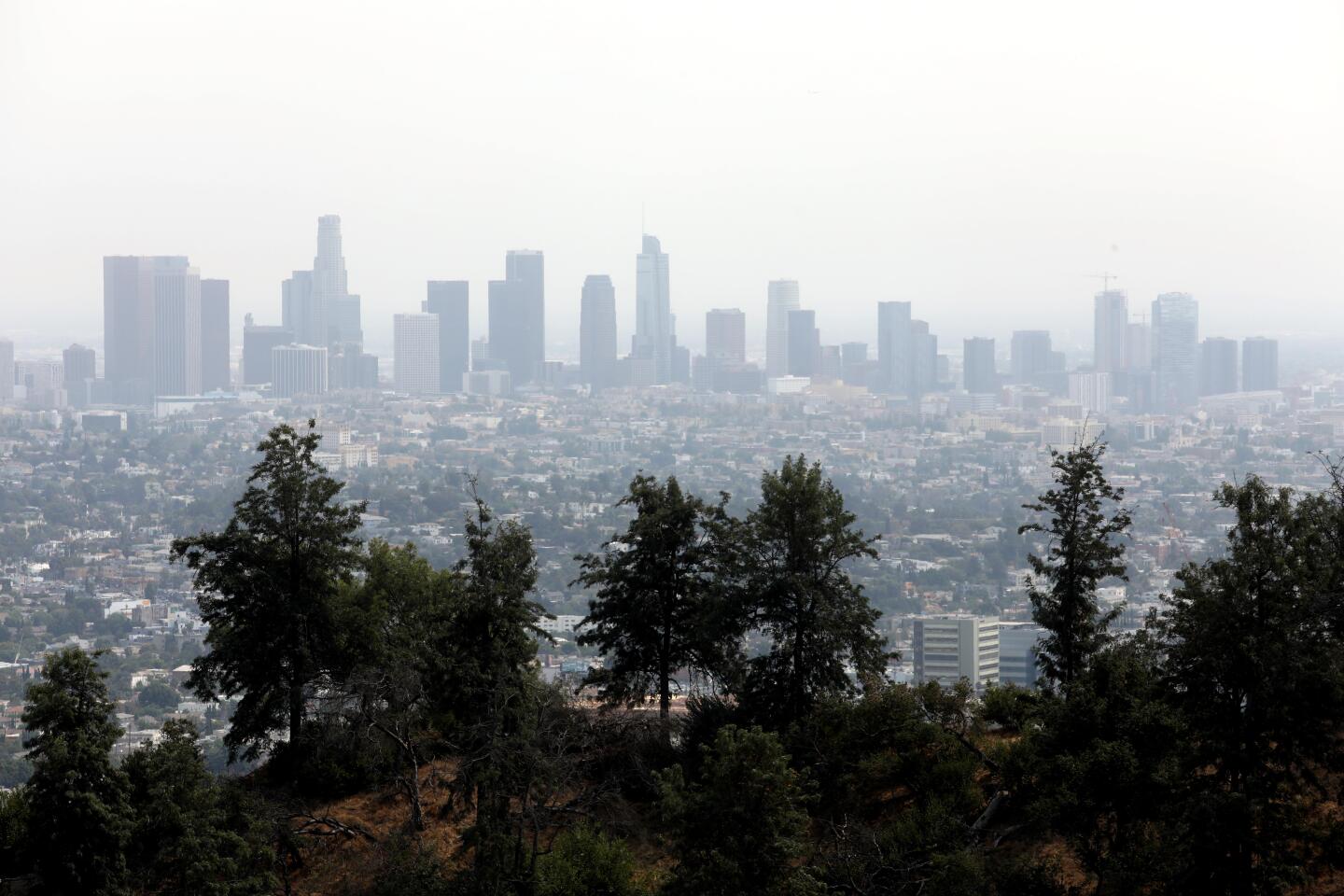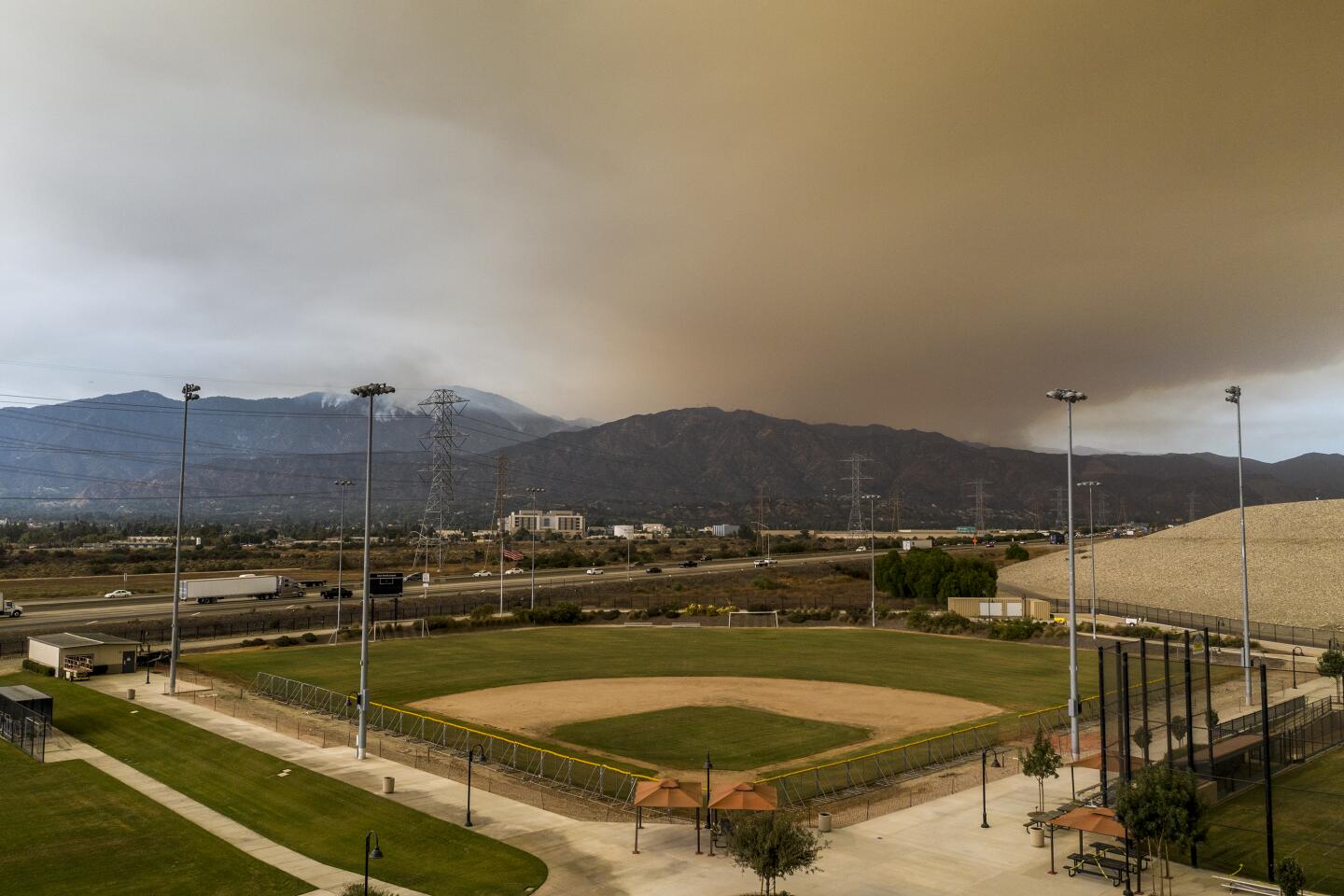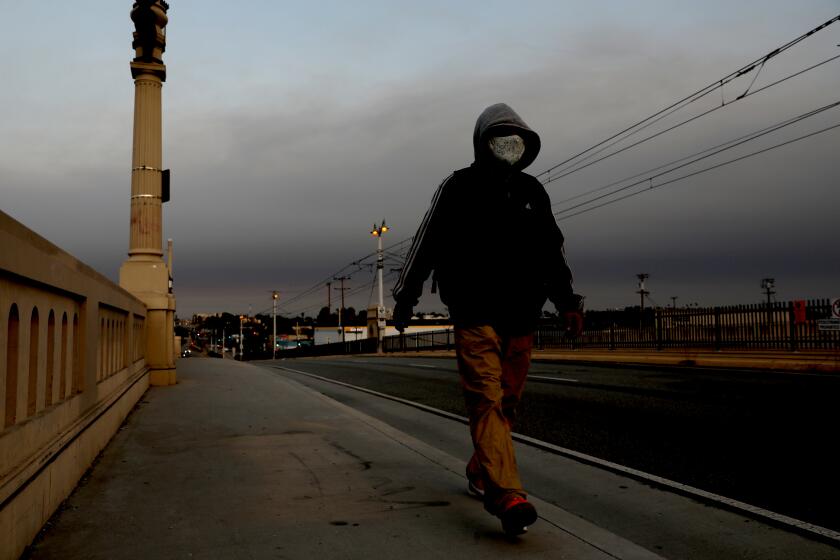As smoke continues to shroud L.A. County, residents worry about long-term exposure
- Share via
Smoke from the Bobcat and El Dorado fires continues to blanket Southern California, prompting the South Coast Air Quality Management District to issue its 10th straight day of advisories.
Some residents of Los Angeles County, growing weary of the thick, hazy air, say they’re at wit’s end.
“You can barely see to the end of the block,” Pasadena resident Stewart Pajares said Wednesday.
Pajares said he felt burning in his eyes and lungs, and when asked what concerned him most about the region’s poor air quality, he said, “breathing.”
Onshore winds will probably begin moving smoke out of the South Coast air basin Wednesday afternoon, the South Coast AQMD said, but “modest smoke impacts” from Northern and Central California fires are likely to persist. Current air quality readings are still lingering in the 150-200 range, which is considered unhealthy by the Environmental Protection Agency.
EPA officials said they are working hard to keep people informed about the risks of the poor air.
“We do need to learn to live with smoke,” EPA air resource advisor Katie Stewart said. “And it’s unfortunate, but we need to be smoke-ready every year.”
The air around Southern California feels like smoke soup because of wildfires. What does that mean for your health and daily routines?
Stewart said home improvements such as caulking windows and replacing worn-out weather stripping can help prevent smoke and poor air from entering houses.
She also said residents with HVAC systems can set the air to circulate so it’s not being pulled in from outside, and recommended that people without those systems use portable air filters to create “clean air shelters” in one or two rooms of their homes.
But after several days of smoky air, such filters are increasingly tough to come by: Local hardware stores have seen a run on customers looking for air purifiers.
“We have some left,” said Rosie Gonzalez of Virgil Hardware in Glendale, “but it’s down to a really limited quantity.”
Financial factors are also a challenge. Portable air filters — if you can get your hands on one — typically run between $100 and $150, Stewart said.
That has left many low-income residents out of luck, particularly since the city’s smoke relief centers opened for only one day last week and haven’t reopened since.
City of Los Angeles spokeswoman Rose Watson said the Department of Recreation and Parks is working with the Emergency Management Division to reopen relief centers this week, but locations and availability haven’t yet been announced.
The Parks Department also said Eaton Canyon, Devil’s Punchbowl and San Dimas Canyon Natural Area will be closed until further notice because of poor air quality. An earlier closure of all national forests in California has been extended through Monday.
The county’s estimated 66,000 homeless residents also have limited recourse from the unhealthful air.
“It’s going to be worse for them in proportion to the amount of extra pollution they experience,” said Suzanne Paulson, director of the Center for Clean Air at UCLA, “because they’re not getting any sort of protective effects from being inside.”
Yet staying indoors isn’t a catchall for clean air. Smoke can make its way into buildings, and any exposure — whether for one day or 10 — can increase adverse health effects.
“There is no threshold,” Paulson said. “More is always worse.”
In Mammoth Lakes, air quality was so bad Wednesday that it registered a 626, beyond the AQI’s standard 0-500 scale. Stewart, the air resource manager at the EPA, said readings in that category are considered “above hazardous” and are typically seen in areas that are susceptible to smoke settling and surrounded by multiple fires.
The guidance for above hazardous numbers is the same as for hazardous ones, she said.
“Your best bet is to stay indoors with your doors and windows shut until the air quality improves.”
But in the Bay Area, which saw some of the worst air quality in the world last week, residents are rejoicing as smoke from the nearby fires dissipates. The Bay Area Air Quality Management District showed readings in the 0-50, or “good,” range Wednesday.
Southern California has yet to see such clean numbers.
“Currently, a stench of fire fills the house,” Mt. Washington resident William Shepherd said Wednesday.
Shepherd described the lockdowns — both from COVID-19 and the smoke — as a “long journey,” and noted that he hasn’t seen or heard any children on his block for some time.
“This event of climate change won’t be the last of huge fires,” he said. “As a veteran, it was our duty to protect the people of America and our landscape. Tragically ... a smoke-filled sky is perhaps our global future.”
More to Read
Sign up for Essential California
The most important California stories and recommendations in your inbox every morning.
You may occasionally receive promotional content from the Los Angeles Times.
